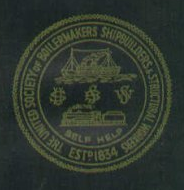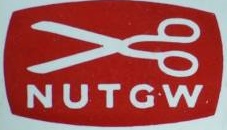
The Transport and General Workers' Union was one of the largest general trade unions in the United Kingdom and Ireland – where it was known as the Amalgamated Transport and General Workers' Union (ATGWU) to differentiate itself from the Irish Transport and General Workers' Union – with 900,000 members. It was founded in 1922 and Ernest Bevin served as its first general secretary.

The Ceramic and Allied Trades Union (CATU) was a trade union representing pottery workers in the United Kingdom.

The Amalgamated Engineering Union (AEU) was a major British trade union. It merged with the Electrical, Electronic, Telecommunications and Plumbing Union to form the Amalgamated Engineering and Electrical Union in 1992.

The Amalgamated Association of Operative Cotton Spinners and Twiners, also known as the Amalgamation, was a trade union in the United Kingdom which existed between 1870 and 1970. It represented male mule spinners in the cotton industry.
The National Amalgamated Union of Labour (NAUL) was a general union in the United Kingdom.

The Amalgamated Society of Boilermakers, Shipwrights, Blacksmiths and Structural Workers (ASB) was a trade union in the United Kingdom. Many of its members worked in shipbuilding, in which industry it was the leading trade union, while over time it also developed strength in engineering and construction.

The National Union of Tailors and Garment Workers (NUTGW) was a trade union in the United Kingdom.

The United Garment Workers' Trade Union (UGWTU) was a trade union in the United Kingdom.

The Amalgamated Weavers' Association, often known as the Weavers' Amalgamation, was a trade union in the United Kingdom. Initially, it operated in competition with the North East Lancashire Amalgamated Weavers' Association in part of its area, and it was therefore nicknamed the Second Amalgamation.
The Wire Workers' Union was a trade union in England which existed between 1840 and 1991. It represented workers involved in the manufacture of wire.
The Amalgamated Association of Beamers, Twisters and Drawers (AABTD) was a British trade union which existed between 1866 and 2002. It represented skilled workers in the cotton industry who were responsible for preparing warp yarns prior to weaving.
The Amalgamated Textile Warehousemen's Association was a trade union representing workers in the textile industry in the United Kingdom, principally in Lancashire.
The National Amalgamated Association of Tin Plate Workers of Great Britain was a trade union representing sheet metal workers in the United Kingdom.
The Blackburn and District Weavers' Winders' and Warpers' Association was a trade union representing cotton industry workers in Blackburn, Lancashire, in England. One of the earliest weavers' unions to endure, it formed a model that many others copied, and was at the centre of early attempts to form a regional federation of cotton trade unions.
The Darwen Weavers', Winders' and Warpers' Association was a trade union representing cotton industry workers in Darwen, Lancashire, in England. As the main industry in the town, the union has been influential in its history, and some of its leaders became significant national figures.
The Bolton and District Card, Blowing and Ring Room Operatives' Provincial Association was a trade union representing cotton industry workers in the Bolton area of Lancashire in England. The longest-established union of cardroom workers, it was central to early attempts to establish a national union for the industry.
The Lancashire Amalgamated Tape Sizers' Friendly Society was a trade union representing workers involved in the preparation of cotton in the Lancashire area of England.
The Amalgamated Union of Clothiers' Operatives (AUCO) was a trade union representing clothing factory workers in the United Kingdom.
The Hinckley and District Hosiery Union was a trade union representing workers involved in making hosiery in the Hinckley area of Leicestershire, in England.
Theodore Herzl Ainley was a British trade union leader and communist activist.









